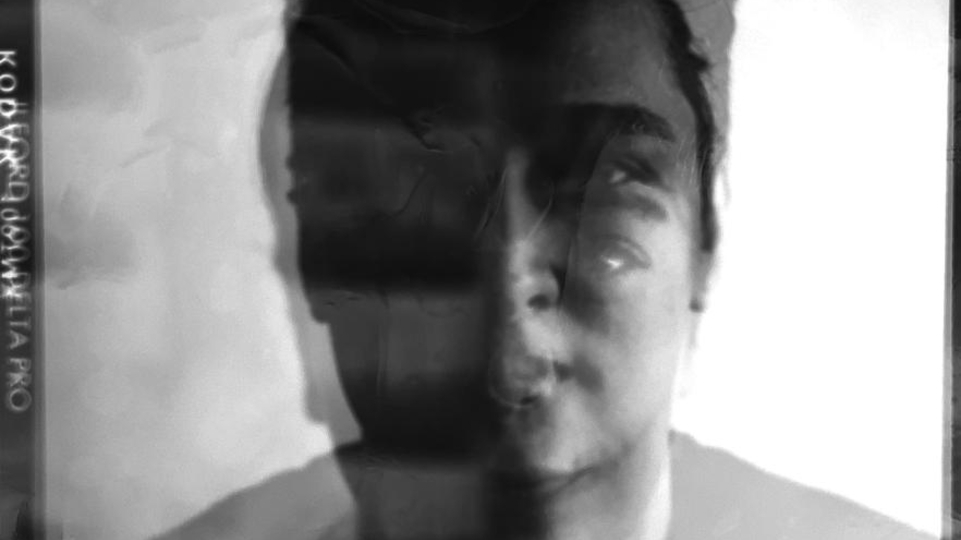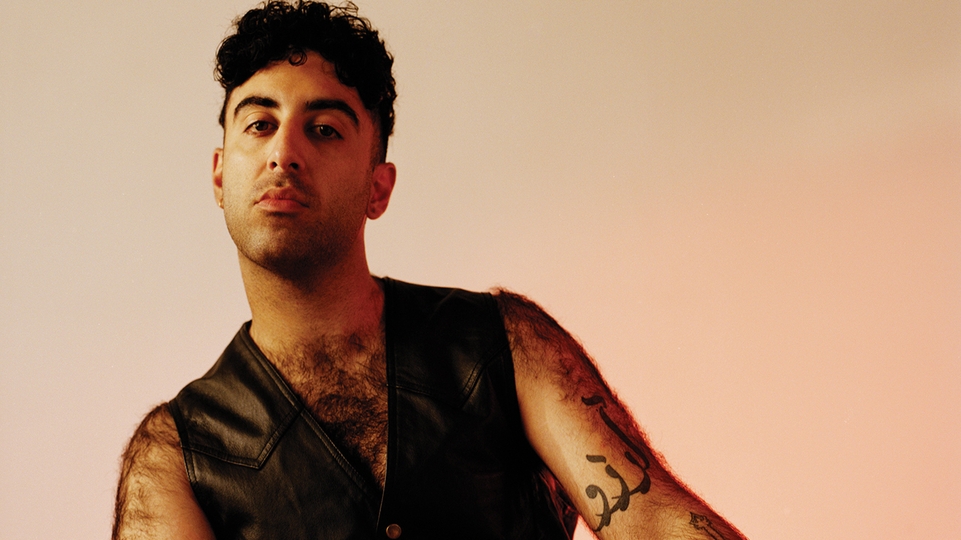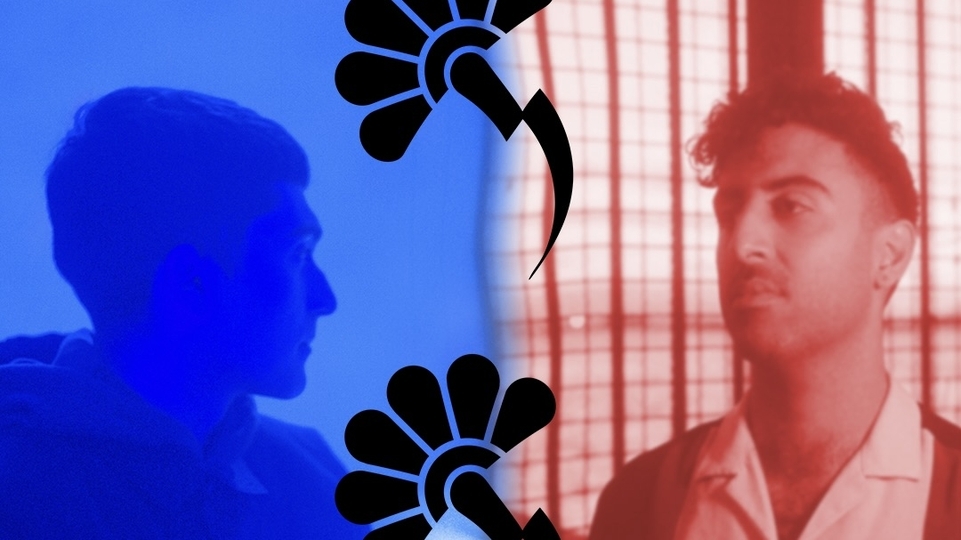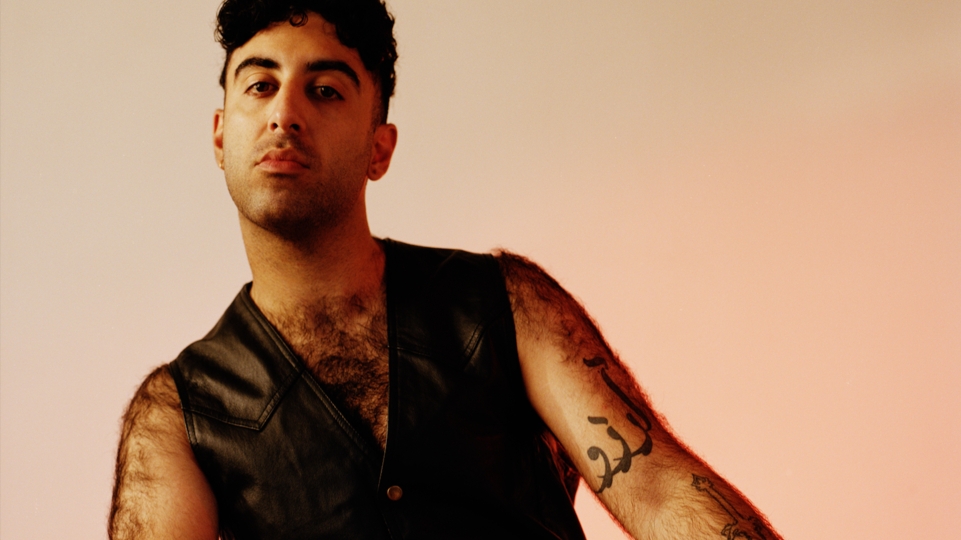
A global mehmooni: Iranian electronic music is raising its voice around the world
For years, Iranian electronic musicians have sought to explore both the beauty and struggles of their home country through art, reflecting its culture, life and nature. Since the country’s recent uprising, sparked by police brutality and the fight for women’s rights, this has felt more pertinent and powerful than ever. Here, alongside a mix of Iranian electronic music from San Francisco-based DJ AIDA, Marke Bieschke speaks to 10 artists from Iran and its diaspora about their work, and the common threads that link them across continents
“You used to know who everyone was, there were so few of us,” says producer and Shaytoon label head Sepehr of the Iranian/Iranian diaspora's electronic music scene. “It was like a mehmooni, a family gathering where you saw everybody. Now there's an explosion of Iranian music of all kinds, which is wild. My dream is for Iranian musicians to be everywhere, and Iranian expression to be a part of everything. Not just this group that's hidden away.”
Iranian music has definitely taken the world stage since the Woman, Life, Freedom protest movement caught fire in September 2022, sparked by the death of 22-year-old Mahsa Amini in police custody, arrested for allegedly not wearing her hijab to government standards. The streets of the capital Tehran and cities around the country filled with protesters, and images emerged of women joyfully tearing off their headscarves and dancing to music in public — things forbidden since soon after the Iranian Revolution of 1979, when the authoritarian Islamic Republic of Iran was established and millions of Iranians fled into exile.
In the violent government backlash to the current protests, prominent dissident musicians have been arrested, including rapper Toomaj Salehi and singer-songwriter Shervin Hajipour, who wrote the movement's unofficial anthem, ‘Baraye’. Still, clips of forbidden dance parties and underground gatherings have continued to appear on social media, indicating a rising bravado, especially among the youth, to manifest a different reality for the country.
Electronic music-making itself is nothing new in Iran; it has a history going back to the 1960s, and has continued throughout the current regime, although necessarily taking more ambient public forms. Contemporary dance music production and house parties have also existed, even causing a global sensation with the 2016 documentary Raving Iran, which was criticised for viewing obstacles to Iranian techno production through a black-and-white Western moral gaze, rather than reflecting the complex everyday surreality of musicians' lives. As for the diaspora, techno giants like Deep Dish, Aril Brikha and Omid 16B made up a tiny representative cadre, but rarely centred their output on their heritage.
In the past decade however, more and more electronic musicians from both within and without Iran have been emerging, and the current protests have turbocharged the scene, summoning whirlwind emotions and outspoken acts of solidarity. We checked in with 10 Iranian artists, whose voices, sounds, and opinions form a rippling digital tapestry of deep connections and musical expressions.
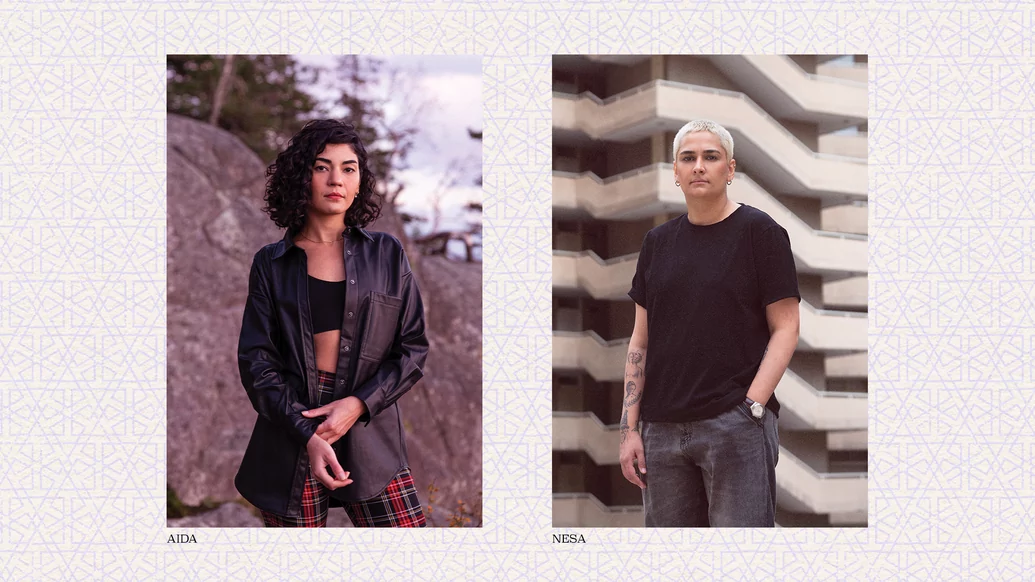
“We're breaking the silencing tactics of the regime by being louder than ever,” says AIDA of ‘WOMAN, LIFE, FREEDOM’, the compilation she and Nesa Azadikhah put out in January on their Apranik label. The album gathers the original, diverse work of 12 contemporary Iranian women electronic producers “in solidarity and towards a fight for a free Iran”, noting its artists “dream of a future where women and girls can openly and safely practice, grow, and shine within arts, especially electronic music”. AIDA adds, “The more people know about this movement and the more talented artists that we are highlighting, the greater the international support that Iranians get in this fight.”
A DJ/producer who emigrated from Tehran to Canada as a child, AIDA pinpoints two sources of Iranian artists' swelling visibility. “When a majority of the industry went online during the pandemic, the appetite for consuming content gave artists in the Middle East an equal playing ground, allowing them to be noticed by publications and bookers in other areas. Another way we have seen an increase is through the work that artists have done to raise awareness about what is going on in Iran, since this is a global issue. With these efforts, music industry publications have taken special interest.”
Her label partner Nesa, also a DJ/producer, has been illuminating Iranian talent for almost 10 years through her vibrant mix podcast platform and news source Deep House Tehran, hosting well over 250 mixes from artists like ambient producer Parsa Khoshsirat from Mashhad, young Tehranian ghettotek specialist Gharal Mane, and dark psy/acid folk player Golbon Moltaji. As the platform has grown, she says through AIDA as interpreter, they've brought on non-Iranian artists, which has also increased its visibility and made it possible to organise showcases in countries that don't require visas for Iranian artists to perform, such as Georgia, Azerbaijan, and Turkey.
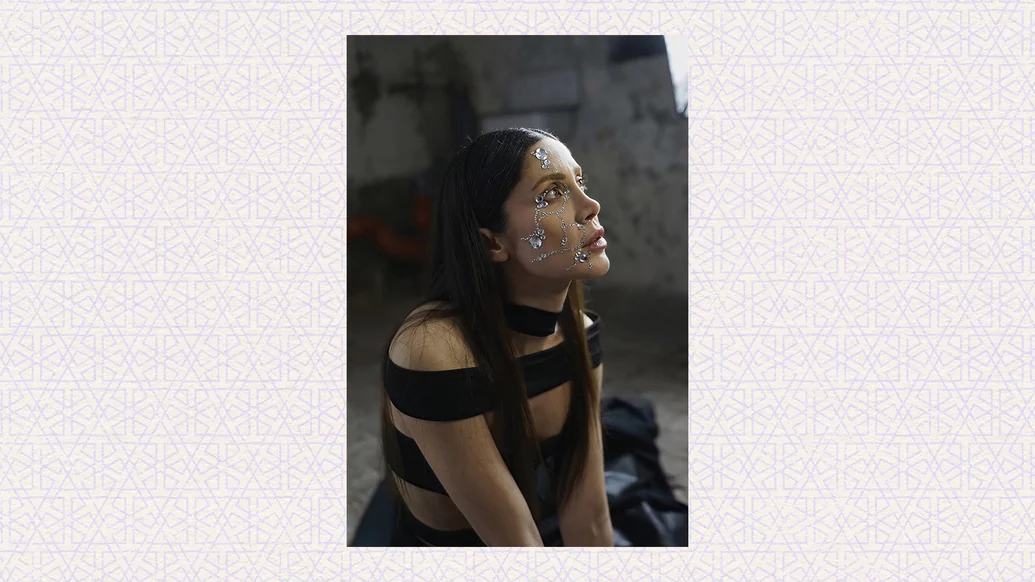
“I had to cancel my flight in 2022 to visit my family,” DJ/producer PEGAH says from her home in Munich, where she moved from Iran to pursue a civil engineering PhD. “My mom said it was better not to come back. It’s really difficult to have all your family in your home country during this time. My body is in one place, but my soul is in another. Music is what's helping me get through this.”
PEGAH grew up in the scenic northern coastal town of Ramsar with traditional musical training, taking singing courses and playing the stringed kamancheh. Initially unimpressed by German clubbing with her uni friends, she “got it” when darker, Berlin-centric sounds caught her ear and drew her into an intense fascination with techno. “Berghain totally changed my musical tastes,” she says. During the beginning of the pandemic, she went all in on teaching herself how to DJ, going “from zero to 100” in music production and promotion.
When the 2022 uprising first started, PEGAH was stunned, and cancelled some gigs to absorb it all. “I was so inspired by the women in the streets. I needed to go to clubs and show the people what was happening. I made a t-shirt and a sign with #MahsaAmini on them and went out. The feedback was crazy, so positive, I didn't expect that.” Her latest EP ‘Woman Life Freedom’ on her own label Ort & Zeit, an epic accompanying video, and a remix of protest anthem ‘Baraye’ reflects that energy — and PEGAH has found musical style has evolved again.
“After the killing of Mahsa, you can hear Iranian music growing darker, but in truth the emotions are mixed: sad, angry, hopeful, hopeless, excited. My job as a DJ and producer is to give space to express this mix of emotions. If you want to laugh, you can do that. If you want to cry, you can do that. Even if you don't know what you want to do, there is space for you, for all these mixed-up feelings.” In August, PEGAH will finally be reunited with her mother, who is flying to Germany to see her DJ for the first time.
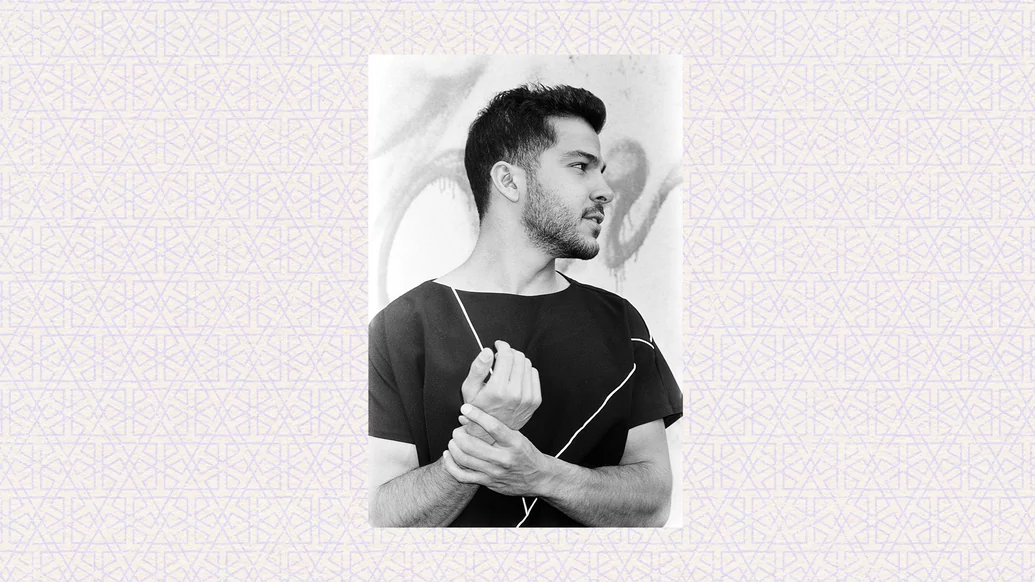
“I am currently living in Tehran, and boy, has there been a lot going on here recently,” says DJ Doci, who contributed one of the most recent Deep House Tehran mixes. “The Woman, Life, Freedom movement changed my view about my people. Needless to say, I understood how brave they are, especially our women. I experienced feelings I never had before: fear, hope, doubt, anger, sadness, all at the same time.”
Doci spent his teens listening to industrial and alternative bands, but followed acts like Radiohead and Nine Inch Nails when they drifted into more atmospheric electronics. Jon Hopkins, Daniel Avery and Boards Of Canada were touchstones, and he soon began mixing on his own around 2016, when he could take time away from his studies at dentistry school. Fellow DJs ROW92, TTTTTTTTT (aka Xcept), DJ Beegazand, Aryan_P, and HEEN helped him along, bestowing his moniker when he graduated (‘Doci’ is Iranian slang for ‘doctor’).
At first, Doci gravitated to a more melodic, leftfield sound, accented by his growing interest in IDM, bass music and jungle. But that changed with the recent upheaval. “Of course, since music comes from my core, the current events affected my taste. I became interested in techno music again, but not like before. This time much darker and deeper. Techno and its raves were always a way to protest, especially in the early '90s. So I became very interested in the new tunes that had grooves and sounds similar to that particular era.
“Mixing and DJing here in Iran have many problems and difficulties,” Doci says, adding that he's planning to move to Germany in the near future and expand into production. “It's difficult to grow as an artist here, but at the same time we are experiencing some kind of true underground.” He cites Nesa, experimental duo Temp-Illusion, and Iranian artists of the Dubai-based Analog Room like Shemroon, Siamak Amidi, Moss, Amira Lii, and Nariman as nurturing the scene.
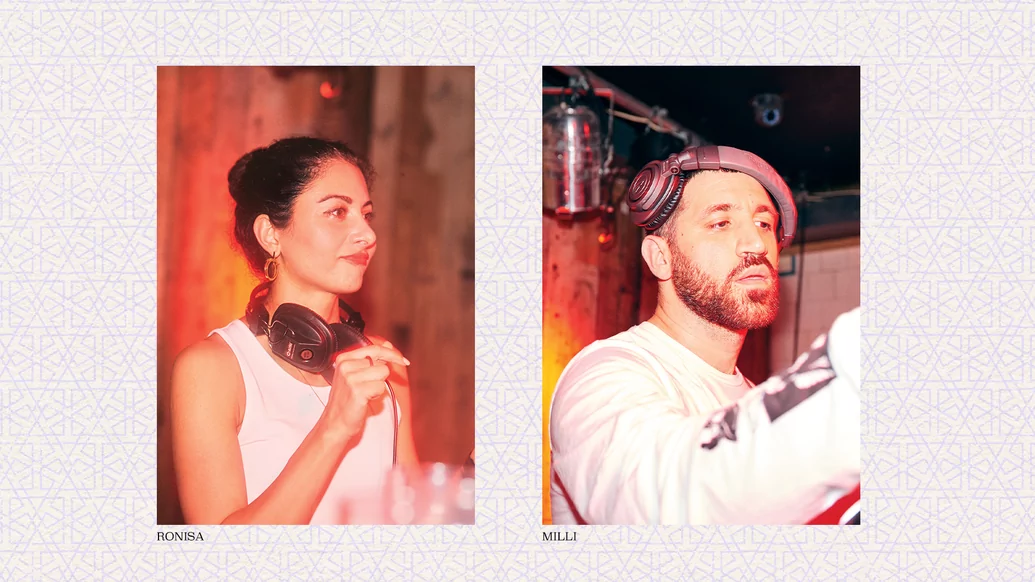
Meanwhile, on a Hackney Wick dancefloor at a recent Mehmooni London party, clubgoers jumped over fire. They were recreating an ancient Zoroastrian tradition for an important holiday. “Chahar Shanbeh Suri is an Iranian festival the Wednesday prior to Nowruz [New Year],” says RONISA, who runs the party with fellow DJ Milli. “As Iranians living in the diaspora, we grew up with these traditions. To be able to combine our culture with our music is a joy. Jumping over the fire with friends whilst blasting electro and techno felt wildly appropriate!”
Beyond showcasing a wealth of Southwest Asian and North African DJs over the past several years, Mehmooni London parties have celebrated holidays like Sizdeh Bahar (Nature's Day) and collaborated with New York-based counterpart Disco Tehran, which aims to recreate, in spirit, “the cosmopolitan venues of 1970s Tehran”. Mehmooni London's own music runs an exhilarating gamut: ’70s Iranian music, ’80s disco, current hypnotic techno. For the fire ceremony party, Milli cheekily played a “Technowruz Burning Man set”, and his taste has lately trended toward multi-tempo Bandari music from Bandar Abbas, the port city connecting Iran to Africa, and its star performer Saeid Shanbehzadeh.
“Deconstructing and reconstructing music is a way for me to explore my diasporic identity,” says RONISA. Her family immigrated to the UK when she was five, and went back to Iran every year, building some of her favourite childhood memories: “hanging out with all my cousins in Tehran, driving up to the Caspian Sea with the whole family, eating loobia polo, playing backgammon.” A professional graphic designer, her DJ experience is rooted in the drum & bass scene, which she discovered at 19 while attending university in Manchester. “I think growing up in the diaspora gives me a particular lens when it comes to music. I’m drawn to both what is familiar and unfamiliar at the same time.”
YARD Records co-founder Milli grew up in London's Persian community and started DJing at the bar of the SOAS school at University of London, host of musical spirits from Paul Robeson to Nirvana, as a way to bridge his ethnomusicology studies and his immersion in the London music scene. But he spent weekends at family parties. “Mehmoonis are lit. It was dancing, it was high-energy percussion, synth-wave, psych-funk, music to gher [shake your hips] too. Mehmooni London parties reimagine the Persian house party we grew up in, fearless in our endeavour to bring Persian nostalgia to rave spaces. I think Iranian music goes harder than any hard dance genre I’ve seen in the Western world, and the life-affirming and soul-rejuvenating power of this music is why I love so much what we are doing.”
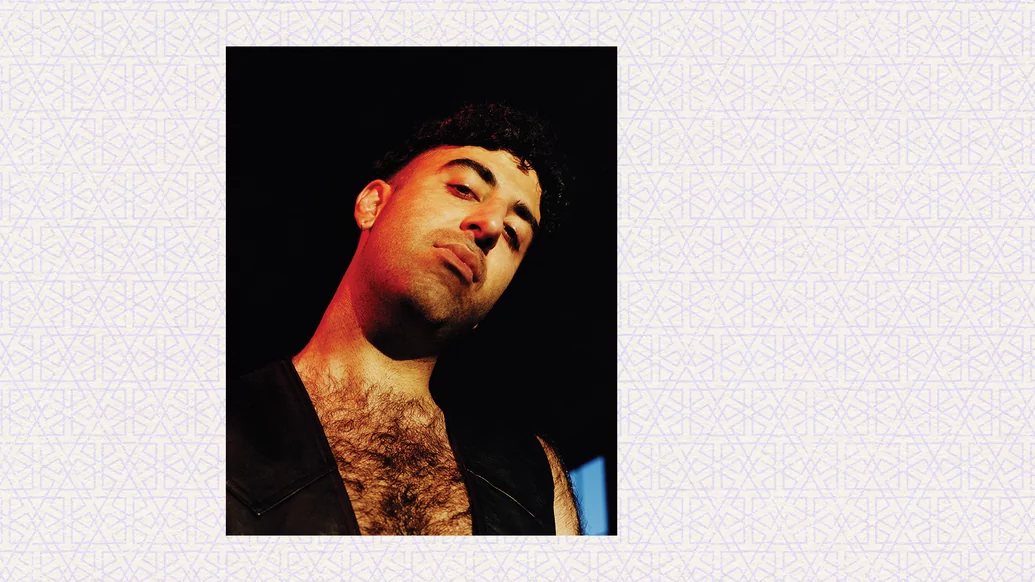
Seven months before the uprising started, in Brooklyn, Sepehr was following his dream of creating an Iranian electronic music utopia by releasing the compilation ‘Sounds from the Iranian Ultraverse’, which collected tracks from NYC’s Aria Rostami, Milad Ahmadi from Hormuz, LA’s Maral, Berlin’s Paramida, London’s Kasra V, and others to create a contemporary snapshot of diasporic production.
“My story is a classic diaspora identity crisis, trying to assimilate but always being an outcast anyway, trying to get away from the music my parents listened to until I realised, ‘wow, I really miss that shit’.” Born in San Jose, California, to Iranian Christian immigrants, Sepehr grew up hearing revered singers like Googoosh and Hayedeh, alongside his mother’s Bee Gees records and a mysterious stack of folk recordings on cassette in his father’s car. “Naturally, I gravitated toward hip-hop and Smashing Pumpkins,” Sepehr says with a laugh. He points out, however, that the older brother of his cousins Sohrab and Skander (who also became DJs) would throw on Paul Oakenfold CDs while they were on the couch playing video games, exposing them to the genre.
Like most Cali teens, he ended up raving in the ‘00s, catching the tail end of the era right before EDM exploded. But at legendary San Francisco underground venue The Compound everything clicked, and he found his “spiritual” calling to combine his love of music with electronic production, a game changer that also coincided with rediscovering his roots. “In my mid-twenties, I was awakening, gradually shedding the traumas of being ashamed of my origins. It was building to this really beautiful moment when I realised this culture should be baked into my musical identity, how powerful it would be to reclaim all those years,” he says.
His major releases, rife with ceremonial booms of percussion and cavernous synths, aim to evoke “visions of monoliths, obsidian mountains underneath blood-red soaked skies and freaky soundwaves”, summoning the spirit of his ancestors while dancing to digital desert drums. “I want to create music that expresses identity without falling into that Hollywood lounge trope of just plopping some Middle Eastern vocal track over easy listening grooves. That’s the worst.”
Part of a small but tight group of West Coast Persian DJs, including Ardalan, Rodney Khalaschi, Mozghan, and colourful, late guiding spirit Navid Izadi, Sepehr eventually moved to New York to strengthen his professional ties to the international diaspora. “There’s a whole new paradigm happening, a treasure trove of Iranian artists who haven’t been recognised. Since the late ‘70s, there’s been almost no representation, now it feels like we’re starting to become a powerhouse.”
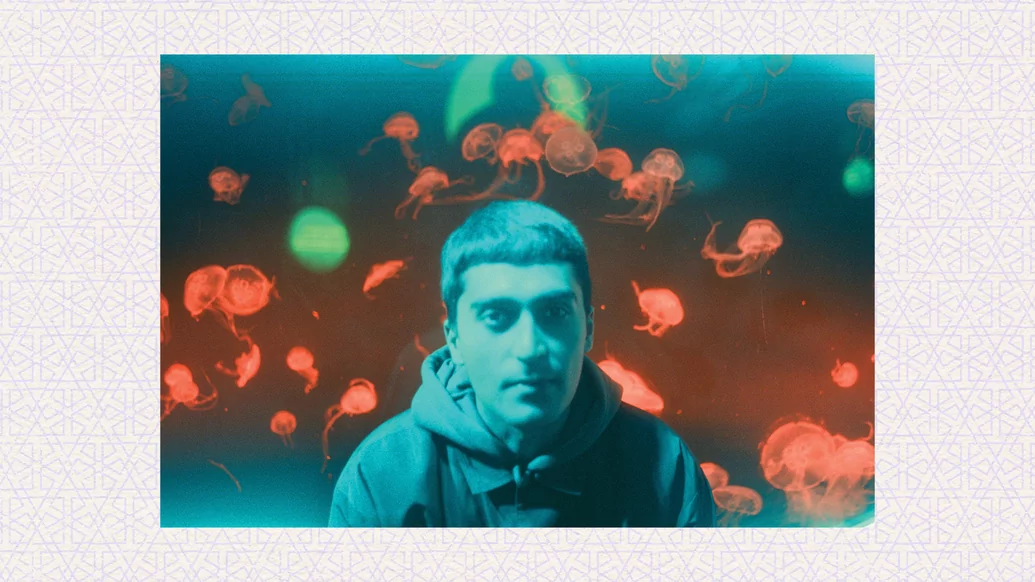
Just before Sepehr dropped his recent EP ‘Diaspora Cocktail’ in April, he announced the launch of Flower Storm, an intricate collaboration with longtime NTS Radio DJ and producer Kasra V, who moved to the UK from Tehran 12 years ago. Flower Storm — named after a 1972 animated short film by Ali Akbar Sadeghi, which channelled Persian miniature art into a tale of weapons magically transformed into blossoms — draws on a deep library of sounds collected by the pair to recontextualise classic Iranian music and folklore within the spectrum of their electronic styles. Instruments such as the daf, tombak and santoor appear, alongside sampled poetry, song and dialogue from old films, over a trilogy of EPs being released throughout the year.
Besides this 'sonic translation' of the music, Kasra says, “We both agreed that Flower Storm should visually take heavy inspiration from musicians with a very strong sense of branding, such as Coil, Drexciya and Aphex Twin, mixed with imagery and patterns from Persian miniatures, calligraphy, glass art, rugs and sculptures. A lot of Iranian art is dedicated or inspired by [1000-year-old epic poem] Shahnameh, also one of our main inspirations. I hope for listeners who might not know to dig a bit deeper and realise that beauty and art exists everywhere, as opposed to preconceptions one might have based on media and news.”
Kasra, whose latest EP ‘Hyperdelic’ layers Iranian tombak recordings and Portishead samples over abstracted boom-bap beats, views what's happening in Iran in a practical light. “For artists inside Iran, this is only the beginning. In the past I used to believe that a 'scene' can't exist without clubs and festivals, but over the past few years we are seeing the opposite thanks to the internet and accessibility to VSTs. One of the main issues artists will face is travelling and touring with a passport that needs a visa for almost any country in the world. This is something that I optimistically hope will change — how and when I don't know.”
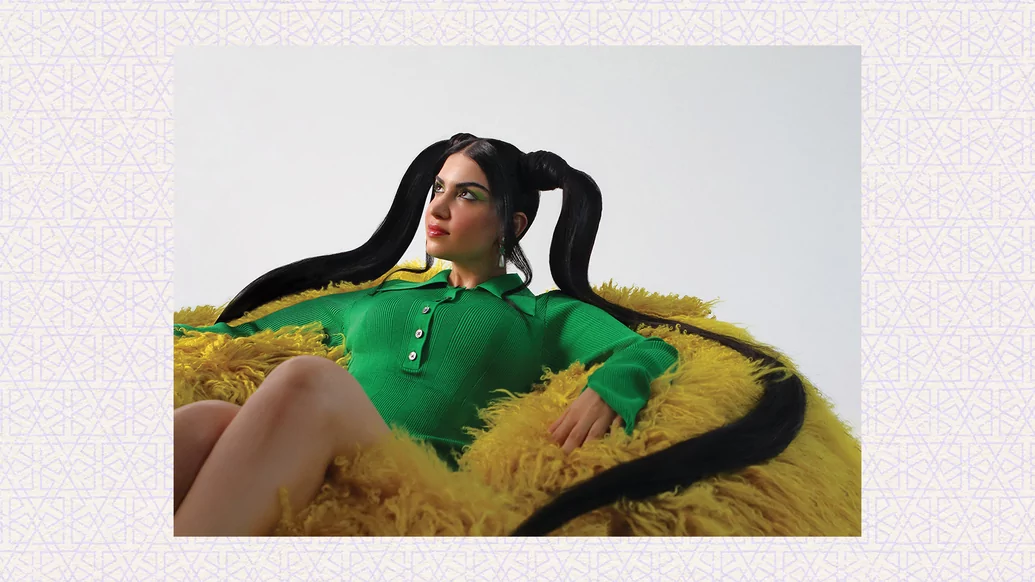
For Panorama Bar resident and Love On The Rocks label head Paramida, contributing a track to ‘Sounds from the Iranian Ultraverse’ was a broader statement of identity. “Honestly, no one knew about my Iranian heritage until that compilation, and I actually liked it that way. I don’t need to ride out a wave as an artist. I don’t want to be known because of my heritage, my gender, or sexual orientation. My art should speak for itself.”
The passionate, deep-digging DJ's artistic independence doesn't mean she isn't invested personally in current events, however. “I do consider myself as a living protest, because everything I am and do is forbidden for women in Iran. I wouldn’t say it is important for me to represent my roots in global spaces, but each of us has the obligation to stand against the inequality and suffering of women worldwide. My mother grew up in Iran after the revolution. She experienced the barbarism of the regime first hand and left for Germany because she didn’t want me to grow up under those circumstances. She raised me in a way that I should always be proud to be a girl and that there was nothing I couldn’t achieve.
“I’m really happy about the current revolution. I never thought this would happen in my lifetime at least. I spent four years in Iran as a teenager and decided to never go back unless the situation for women would change. I remember being in Iran when I was 13 for the first time, coming from Germany with my skateboard and punk attitude, needing to wear a scarf and wondering why I had to do that. I don’t think I will ever go back unless drastic changes occur and I won’t be shamed as a woman (by both men and women) just because I don’t play by societal norms. Everyone’s dress code should be a personal choice.”
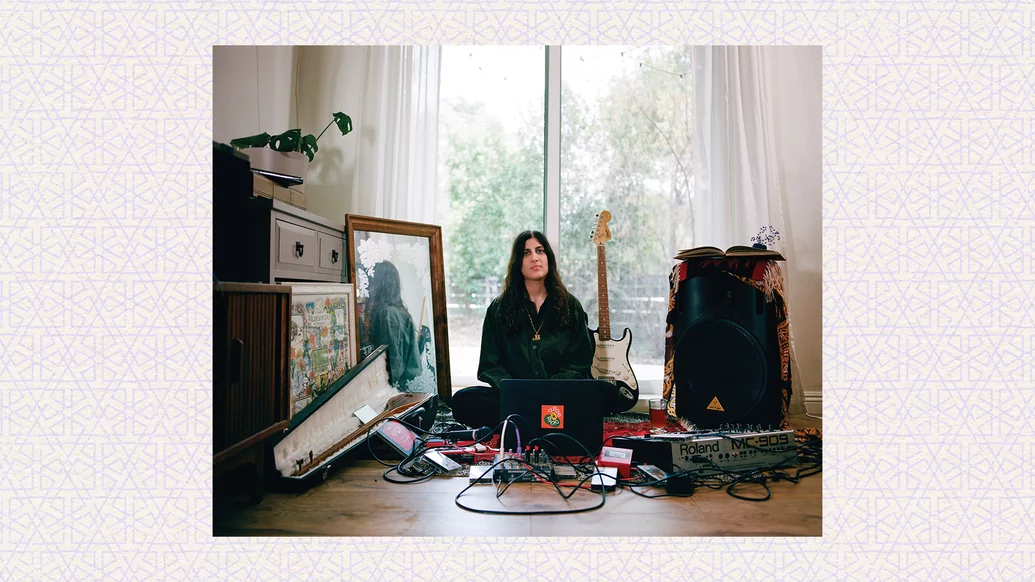
DJ Mag’s Fresh Kicks mix series recently featured LA’s Maral, who put together a deeply ruminative yet celebratory Nowruz mix that showcased her “folk club” approach to mixing, seeding Digital Mystikz, PJ Harvey, Hayedeh, Arca, Eric B. & Rakim, and her own compositions into a wheeling vernal lotus bloom. “Music, poetry and nature: those are the tenets of being Iranian,” she told DJ Mag’s Eoin Murray in the accompanying interview. “A lot of our holidays are around natural events... They require you to go to a park, or go to a river, or go to a body of water... I need it.”
Maral’s latest album ‘Ground Groove’ is her most rugged yet, glinting with jagged shapes, squalling guitar, and towering samples throwing premonitory shadows over crepuscular landscapes. (Her sampling secret weapon is Jahansuz Dadbeh’s ‘Dashtestani’, a classical Iranian record on which the slight delay on the vocals reminds her of “when I was younger, seeing live performances through shitty speakers and the mixture of unintended distortion and feedback that can come with it”.) Yet despite the forthright sounds, Maral sees herself now focused on making “shimmery, uplifting music” inspired by psychedelia and reverberating sense memories of childhood visits to Tehran, like the smell of fresh bread and the calls to prayer as she visited her grandmother.
“It’s very different from other Iranian artists I’ve talked to, who are more literally channelling the anger and wild energy of the uprising right now,” she says. “All of my music to date has been channelling the anger and sadness that is inherent in being Iranian. It’s been my way of processing these deep feelings. But as I’ve grown older I keep remembering that growing up, no matter how bad things were, my family always made sure to celebrate the positive, even something as simple as going to the river and finding solace in nature. That I think is the biggest thing I’ve learned from my time in Iran: resilience in the face of darkness. I wanted to start reflecting that in my music, and even though the tracks always end up sounding dark and have sadness in them, I want there to be brief, shimmering moments of positivity.
“Growing up in the diaspora, it is so disappointing to see how superficial our understandings of other countries outside of the Western powers are. I feel such a drive to share the little magic moments of growing up Iranian, of going to Iran and the positive impact of those experiences. It’s important for the people living in the West to be aware of other countries beyond the propaganda. I hope that showing people things beyond the narrative that the West has created for Iran will be helpful in people’s perceptions of the Middle East, and how the West’s actions there are impacting real people and cultures.”
A global mehmooni, mixed by AIDA.
Tracklist:
Madota ‘Historic’
AZADI.mp3 ‘Empty Platform’ [Apranik Records forthcoming]
Rojin Sharafi ‘dbkkk’ [Apranik Records forthcoming]
ArtSaves ‘Bore’ [Kopi Records]
Voiski ‘Summm’ [Unreleased]
Aria Rostami ‘Bolbol (Sepehr Dark UKG Mix)’ [Shaytoon Records]
Flower Storm ‘This is my court’ [Flower Storm]
NAVA ‘Sleepless’ [Unreleased]
Mohammad Reza Mortazavi & Burnt Friedman ‘YEK 166–3’ [YEK]
Salar Ansari ‘This Chord’ [Moozikeh Analog Room forthcoming]
AIDA ‘Ode to Expectation’ [Apranik Records forthcoming]
Salar Ansari ‘Feelings from the Future’ [Moozikeh Analog Room forthcoming]
Obadius ‘Apadana’ [Nug-Net-04]
Disabnormal ‘Equivocal’
Sina XX & Lacchesi ‘Goth It’
Nesa Azadikhah ‘Perpetual’ [Apranik Records forthcoming]
